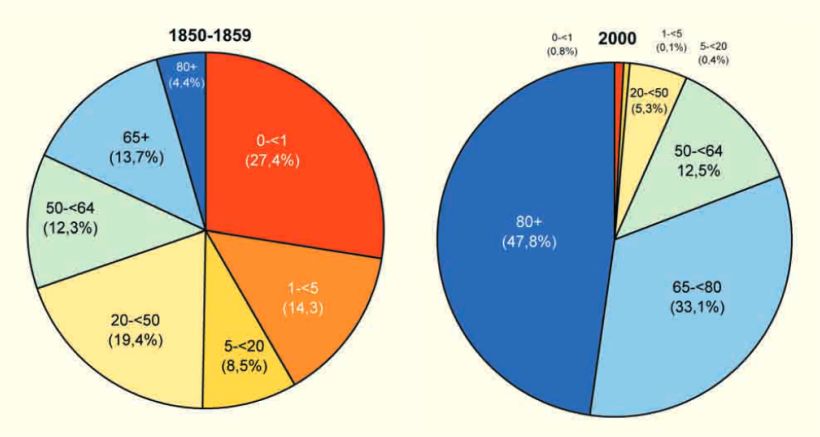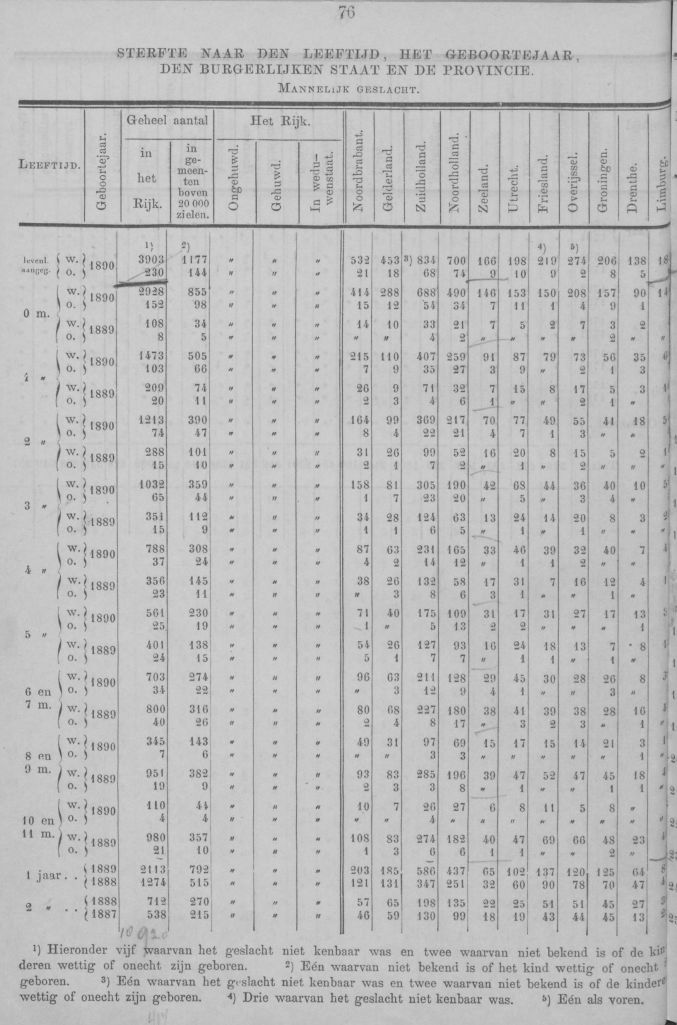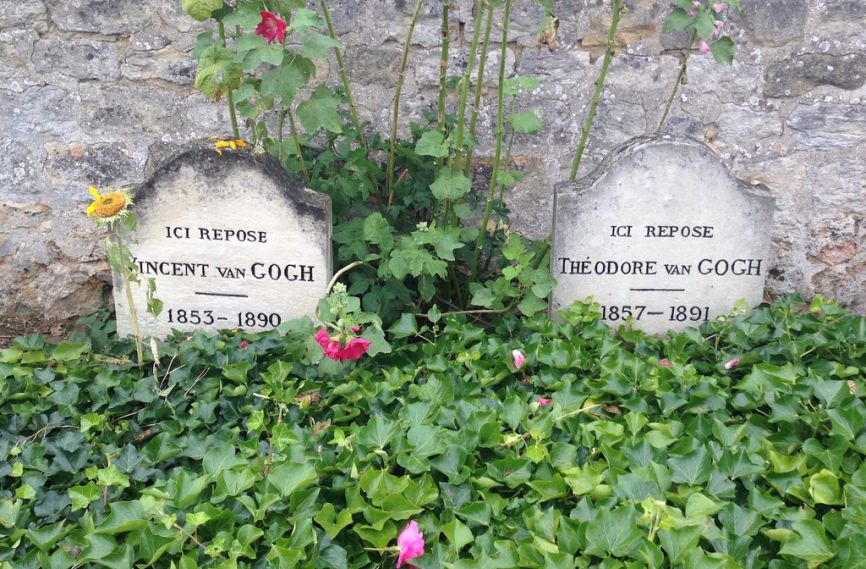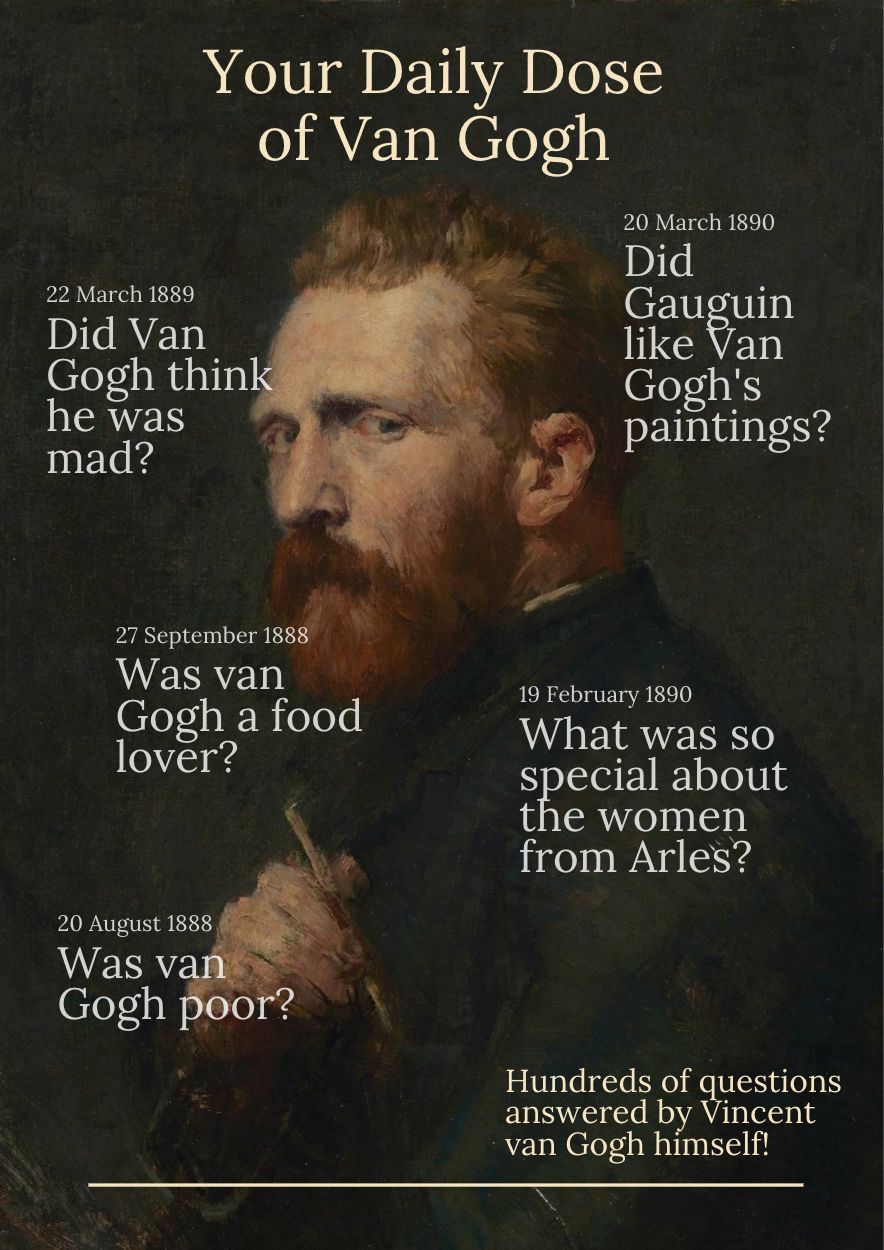-
Did Vincent van Gogh die young?
In July 1888 Vincent van Gogh wrote to his brother Theo:
'Someday death will take us to another star.’
2 years later Van Gogh died, at age 37. In the second half of the 19th century people didn’t become as old as we do now. In fact dying at 37 was not much under the average age to pass away in The Netherlands. That doesn’t mean there were no old people. Claude Monet (1840 - 1926) for example reached the age of 86 years old. So, at what age was someone considered to die young?
It may be misleading to look at the average mortality age though. You could get the idea that there were no old people back then.
But…
18,1% of people reached the age of 65 or above and 4,4% became even more than 80 years old.
And..
As could be calculated from the available statistics: if you hadn't died under the age of 5, you would have had a chance of 31% to get older than 65 and even a chance of 7,5% to get older than 80.
(13,7+4,4) / (100-27,4-14,3) = 31%
4,4 / (100-27,4-14,3) = 7,5%
Looking at the image 2. depicting life expectancy, you can see that white males in The Netherlands in 1890 who were 30 years old had an average life expectancy of 30 + 34,05 = 64,05 years old. And being forty years you were likely to become 40 + 27,37 = 67,37 years old.
Van Gogh died when he was 37 years old (probably by committing suicide). In his situation you were expected to become around 66 years old. Imagine all the masterpieces he could have added to his already impressive number of 900 paintings. How would his style have developed further? Would he have become famous while alive?
'Someday death will take us to another star.’
2 years later Van Gogh died, at age 37. In the second half of the 19th century people didn’t become as old as we do now. In fact dying at 37 was not much under the average age to pass away in The Netherlands. That doesn’t mean there were no old people. Claude Monet (1840 - 1926) for example reached the age of 86 years old. So, at what age was someone considered to die young?
Mortality statistics
Mortality statistics of the 19th century are not easy to find. Fortunately Dutch law in 1865 made it compulsory to get the cause of each death certified by a doctor. One of the reasons behind this law was to avoid people being buried alive who only seemed dead (suspended animation). Currently available statistics are incomplete, but at least it is possible to get some idea of life expectancy in Van Gogh’s time. (On mobile scroll down to view images.)Average age
Nowadays we are expected to live well in our 80’s, so the average age to pass away has more or less doubled since Van Gogh was alive. This is mostly due to the huge drop in infant mortality rate. Where 41,7% of the people between 1850 - 1859 died before they were 5 years old, that percentage was less than 1% in 2000 (image 1)Why did people die so young?
Many cases of infant mortality were caused by diarrhea. Other common diseases were smallpox, rubella, measles, typhoid, diphtheria and cholera. Improved hygiene as well as vaccination were essential to conquer the diseases successfully.It may be misleading to look at the average mortality age though. You could get the idea that there were no old people back then.
But…
18,1% of people reached the age of 65 or above and 4,4% became even more than 80 years old.
And..
As could be calculated from the available statistics: if you hadn't died under the age of 5, you would have had a chance of 31% to get older than 65 and even a chance of 7,5% to get older than 80.
(13,7+4,4) / (100-27,4-14,3) = 31%
4,4 / (100-27,4-14,3) = 7,5%
Van Gogh’s life’s expectancy
And what was Van Gogh’s life’s expectancy when he painted his now famous masterpieces in the South of France?Looking at the image 2. depicting life expectancy, you can see that white males in The Netherlands in 1890 who were 30 years old had an average life expectancy of 30 + 34,05 = 64,05 years old. And being forty years you were likely to become 40 + 27,37 = 67,37 years old.
Van Gogh died when he was 37 years old (probably by committing suicide). In his situation you were expected to become around 66 years old. Imagine all the masterpieces he could have added to his already impressive number of 900 paintings. How would his style have developed further? Would he have become famous while alive?
Lies, damned lies, and statistics.
Although incomplete, the available statistics give an insight in Van Gogh’s expected age to die. Being mentally severely ill and hospitalized in Arles in 1888, he may have been worried about becoming old. But otherwise he could well have lived another 30 years from that moment.
Image 1. Mortality age 1850 - 1859

Image 2. Expected extra years to live from a certain age.

Dutch mortality statistics 1890. Source: CBS

Vincent and Theo van Gogh died when they were 37 and 33 years old.
You may also like to read:
Your Daily Dose of Van Gogh
What did Vincent van Gogh write on this day?Find out in your FREE Van Gogh e-book.
Hundreds of questions answered by Van Gogh himself!
Comments (0)
No comments found.
